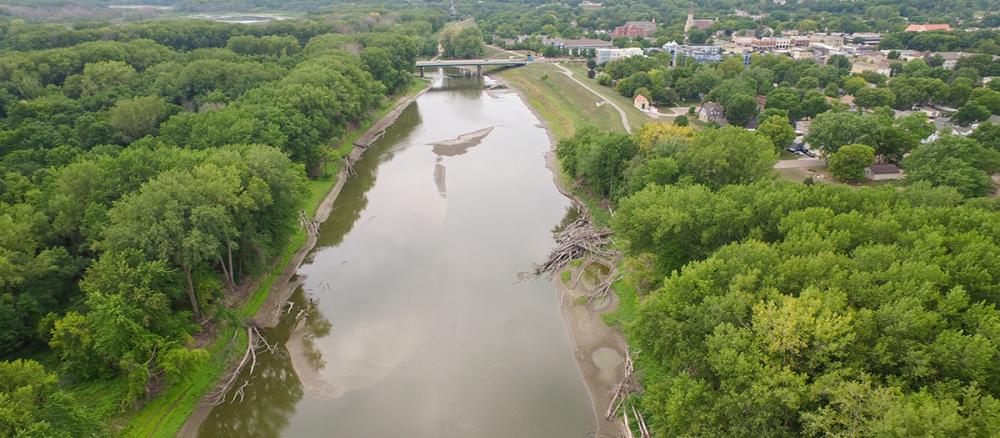A retired couple drops in their boat at the Lower Minnesota River ramp under the Interstate 35 bridge. Anglers wave while casting their lines from the banks. Eagles and egrets snag fish from the water. Tugboats chug along, pushing barges of grain and other materials.
And Lee Engel, water monitoring supervisor for the Minnesota Pollution Control Agency (MPCA), and his crew deploy equipment at different points on the river between Minneapolis and Shakopee for a special study during this summer's drought conditions.
Climate change has led to more extreme weather in Minnesota, including both droughts and flooding, sometimes in the same year. As flows in the Lower Minnesota River approached historic lows in early August 2021, the MPCA started collecting data on dissolved oxygen levels and other water quality parameters along 22 miles of the river.
It’s been nine years since flows were this low and conditions so stressful for fish and other aquatic life. The Lower Minnesota River usually flows at 3,000 cubic feet per second (cfs) in August. This year flows dipped to 548 cfs.
“Low flows are difficult for fish and other creatures in the river,” says Katrina Kessler, assistant MPCA commissioner for water policy. “Lower water levels means less available habitat. The river tends to be warmer because there is less water to absorb solar radiation. Warmer water promotes algae growth that uses oxygen that would otherwise be available for fish, and fish are competing for the deeper and cooler pockets of water.”
Low flows are also a critical time to check whether phosphorus discharge limits on wastewater plants are working to protect aquatic life. With low flows, discharges from wastewater treatment plants make up a higher concentration of phosphorus in the river water. Phosphorus can fuel the growth of algae, which robs oxygen from aquatic life and can even lead to fish kills.
In 2004, the MPCA put stricter limits on phosphorus for dozens of wastewater treatment plants that discharge to the Minnesota River Basin and impact the Lower Minnesota River.
“Drought conditions are the ideal time to measure whether wastewater permits are protective, that there’s enough oxygen for aquatic life that depend on it, even at low levels,” says Kessler.
This is only the second time that the MPCA has been able to check on the effectiveness of the permit limits. A 2012 study found that the limits were effective at keeping the river’s oxygen levels healthy. The MPCA expects results from the 2021 study by late fall.
